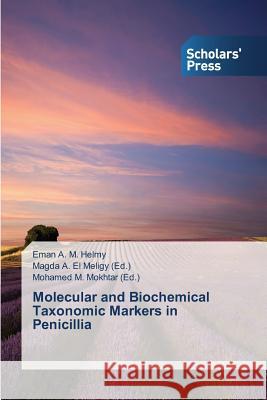Molecular and Biochemical Taxonomic Markers in Penicillia » książka
Molecular and Biochemical Taxonomic Markers in Penicillia
ISBN-13: 9783639516289 / Angielski / Miękka / 2015 / 304 str.
Identification of Penicillium species was not easy and needed accurate and expertise mycologist. Three different species, namely; P.hordei (eight), P.roqueforti (eleven) and P.aurantiogresium (twenty nine) were subjected to polyphasic approach of four chemotaxonomical markers; volatile metabolite (VM), fatty acid (FA) and secondary metabolite (SM) profiles as well as the random amplified polymorphic DNA with the polymerase chain reaction (RAPD-PCR) fingerprinting pattern. The results revealed the succession of all the investigated markers using one growth medium (YES) to identify and differentiate between the representatives of the three tested species (intraspecifically) excepted in case of volatile metabolite (VM) profile with P.hordei and P.roqueforti. Other relations between type strains could be read from the dendrograms and the efficient classification showed the potential of this polyphasic approach identification system.
Identification of Penicillium species was not easy and needed accurate and expertise mycologist. Three different species, namely; P.hordei (eight), P.roqueforti (eleven) and P.aurantiogresium (twenty nine) were subjected to polyphasic approach of four chemotaxonomical markers; volatile metabolite (VM), fatty acid (FA) and secondary metabolite (SM) profiles as well as the random amplified polymorphic DNA with the polymerase chain reaction (RAPD-PCR) fingerprinting pattern. The results revealed the succession of all the investigated markers using one growth medium (YES) to identify and differentiate between the representatives of the three tested species (intraspecifically) excepted in case of volatile metabolite (VM) profile with P.hordei and P.roqueforti. Other relations between type strains could be read from the dendrograms and the efficient classification showed the potential of this polyphasic approach identification system.











